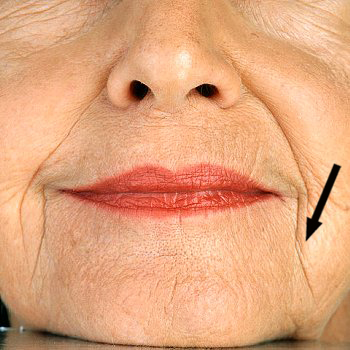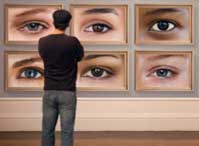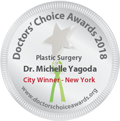 So-called “marionette lines” run from the corners of your mouth down to your chin and can make you look, well, like a marionette. Although frowning and weight fluctuations are thought to contribute to the problem, the real cause of marionette lines is the aging process.
So-called “marionette lines” run from the corners of your mouth down to your chin and can make you look, well, like a marionette. Although frowning and weight fluctuations are thought to contribute to the problem, the real cause of marionette lines is the aging process.
As we age, we lose collagen and with it, skin elasticity. When skin elasticity is lost, we get sagging. Another contributor to the problem may be the loss of the facial fat that can occur with aging. Although we tend to think all fat loss is good, the fat that we lose from our face serves a valuable purpose: its volume supports the skin and stretches it taut. Without it, the skin sags like a deflated balloon.
As volume is lost in the upper part of the cheek, the skin sags, forming both nasolabial folds (the parentheses lines running from the nose to the mouth) and marionette lines.
Fillers
When used on the face, injectable fillers do what their name implies: they plump up surface depressions, furrows, and wrinkles, like the nasolabial folds and marionette lines. While Botox and Dysport are excellent at relaxing overactive muscles in the upper half of the face, making them the perfect choice for smoothing a wrinkled forehead or softening crow’s feet, fillers work well on deep wrinkles. That’s why fillers are a superior choice to soften the marionette lines.
Fillers can also be used to add volume to the upper cheeks to replace lost fat and lifting the skin while adding height to the cheekbones. In addition to beautifying the cheeks, adding filler to this area can help alleviate some of the sagging affecting the lower portion of the face.
Of course, fillers have all sorts of other applications. They can be used to add volume to the lips and reverse the “hollow” look that age often brings to the eyes. She can even correct jowls, giving the profile a more sculpted look by adding volume to the jawline. Dr. Yagoda of New York/ Manhattan has developed many innovative non-surgical procedures, such as the Tr-EYE-umph! and non-surgical facelift that harness the unique properties of fillers to produce amazing, instant results with minimal or no downtime.
Side effects or complications are rare, although some of the more common ones are bruising, swelling, and redness at the injection sites. These effects are all temporary and generally, short-lived. You’ll be able to see immediate improvement after your in-office treatment.
As you’re probably aware, there are many different filler products on the market. Based in Manhattan/NYC, Dr. Yagoda will take the time to patiently explain all of your alternatives and recommend the right filler for your needs. Great care goes into the planning and execution of your nonsurgical wrinkle reduction procedure, and Dr. Yagoda is both gentle and precise. Read more about fillers.
Surgical correction
Although fillers can certainly be very effective at softening marionette lines with little or no downtime, some patients opt for surgery instead. With fillers, the results are temporary and you’ll have to repeat the treatments to maintain your results. Over time, this can prove to be a more expensive option than surgery, which offers lasting results.
Some patients with deep marionette lines and nasolabial folds also have other concerns about the lower portion of their face. They might have sagging, slack, or jowly skin over their cheeks and jawline. Perhaps they have slack skin on the neck as well. For many of these patients, a facelift may be their best option for meaningful facial rejuvenation. Fillers used in conjunction with surgery or injected in the immediate post-operative period tend to yield longer-lasting results.
Just to be clear, today’s facelift is nothing like those too-tight, obvious procedures that were once the norm. When properly performed and used in an integrated approach, a facelift is completely natural-looking, giving you a more youthful and rested appearance. Sophisticated and experienced plastic surgeons no longer just stretch the skin taut and call it a day. Instead, we aim to restore youthful tone, texture, and volume, augmenting the surgery with, among other things, skin resurfacing treatments and injectables for a far more satisfying result.
The facelift procedure itself has changed and it’s no longer as invasive. New techniques have made the scars smaller and less conspicuous, healing and recovery more rapid and pleasant, procedures less risky, and the overall results far more rewarding than traditional facelift surgery.
The areas of the face treated by a facelift predominantly include the lower third of the face and the neck. The procedure addresses the jawline and jowls, crepey and wrinkled skin texture, and the ropey, sagging skin of the neck (the so-called “turkey gobbler neck”). A facelift can also counteract the effects of aging and sun damage on the face, jawline and neck areas. Learn more about facelifts.
Unsure about the best way to treat your marionette lines? Dr. Yagoda will be happy to answer your questions and assess your needs during a private consultation in her NYC/ Manhattan office.
Flying In
From Quebec to Qatar, Dr. Yagoda’s patients come to New York and Manhattan from all over the world. Find out how we can help you get here from abroad.


































